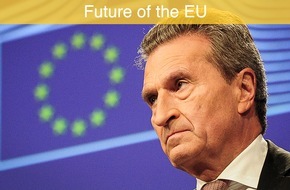At regular intervals, the European Union (EU) determines how much money it intends to spend over the following years and how it is to be used. The resulting Multiannual Financial Framework (MFF) lays the groundwork for the bloc's annual budgets. It is usually adopted for a period of seven years. Among other things, the MFF allows the bloc to better adjust its spending to its political objectives. The long-term nature of the framework makes the EU's financial priorities more predictable, thereby making budget planning easier not only for the bloc itself but also for potential co-financiers or beneficiaries.
The EU's current MFF runs until the end of 2020. According to plans by Budget Commissioner Guenther Oettinger, the follow-up budget for the years 2021 to 2027 is to be increased to a sum of 1,279 billion euros, taking into account inflation. The budget between 2014 and 2020 amounted to 1,087 billion euros after inflation adjustments. Oettinger wants to increase funding for defence, research, youth and border protection. However, he wants to cut back on financial support to farmers and underdeveloped regions - the largest items in the EU budget so far.
However, the plans have led to some discussion. Several member states are lobbying to retain large agricultural subsidies or structural funds for underdeveloped regions, arguing that these are where the public sees the true value of the EU. The European Parliament insists on greater spending increases, calling for, among other things, a doubling of resources for tackling youth unemployment and a tripling of funds for the Erasmus youth exchange program.
The negotiations are made more difficult because of the UK's planned withdrawal from the EU. Like Germany and France, Britain has so far been one of the major net contributors. Its departure will leave an estimated annual funding gap of at least 12 billion euros. If the looming gap in the MFF is to be plugged and the new spending priorities to be met, the missing funds must be raised from other states after Brexit.
An agreement between the European heads of state and government on the upcoming Multiannual Financial Framework is expected to be reached at the EU summit in autumn 2019.
The following interactive graphic illustrates the composition of the EU's forthcoming Multiannual Financial Framework as it is currently being debated: http://dpaq.de/mPPes
[Attention: These images are intended exclusively for editorial use in connection with the current coverage and may be used only when using the copyright notice "Photo: dpa".]


